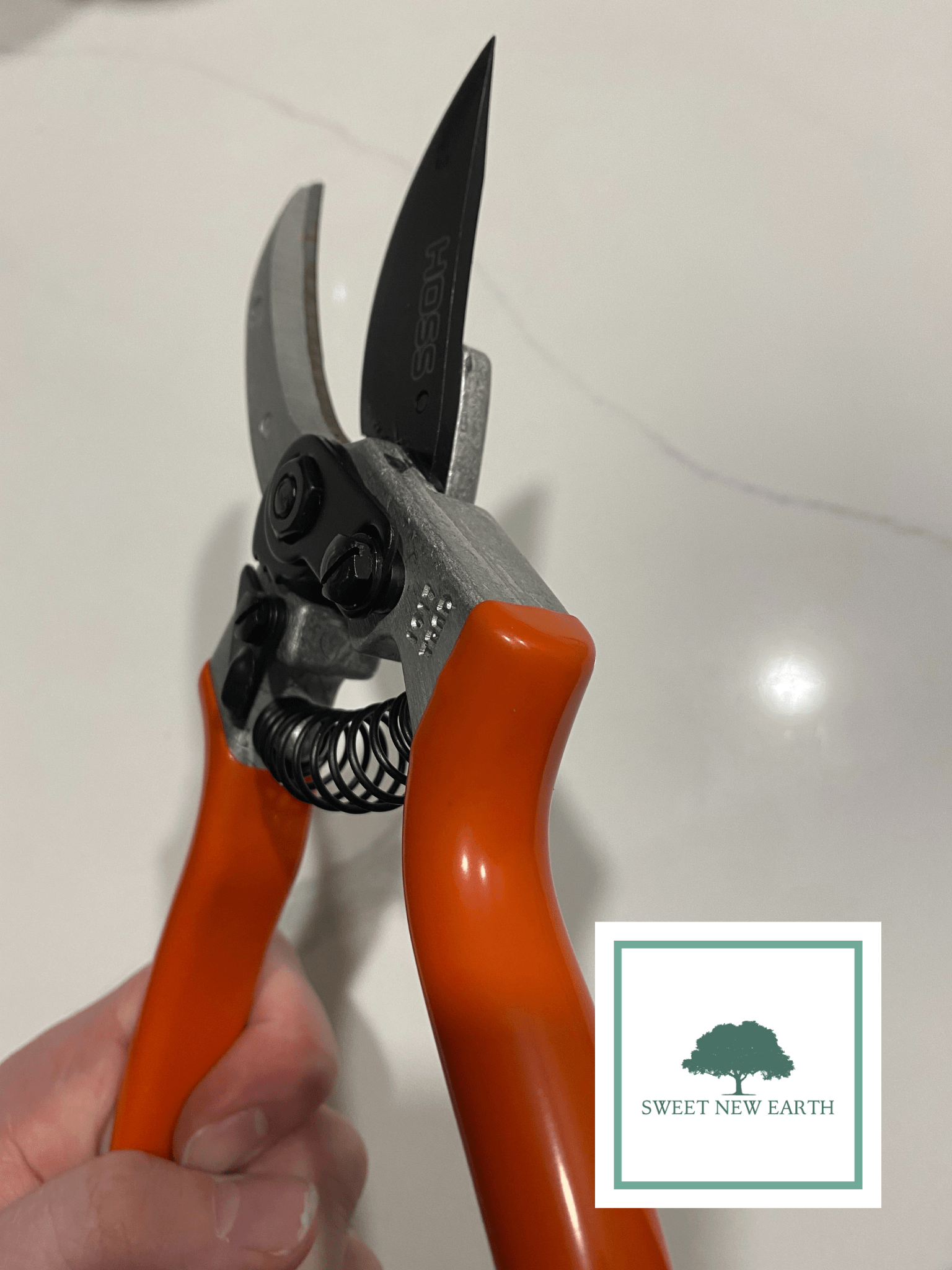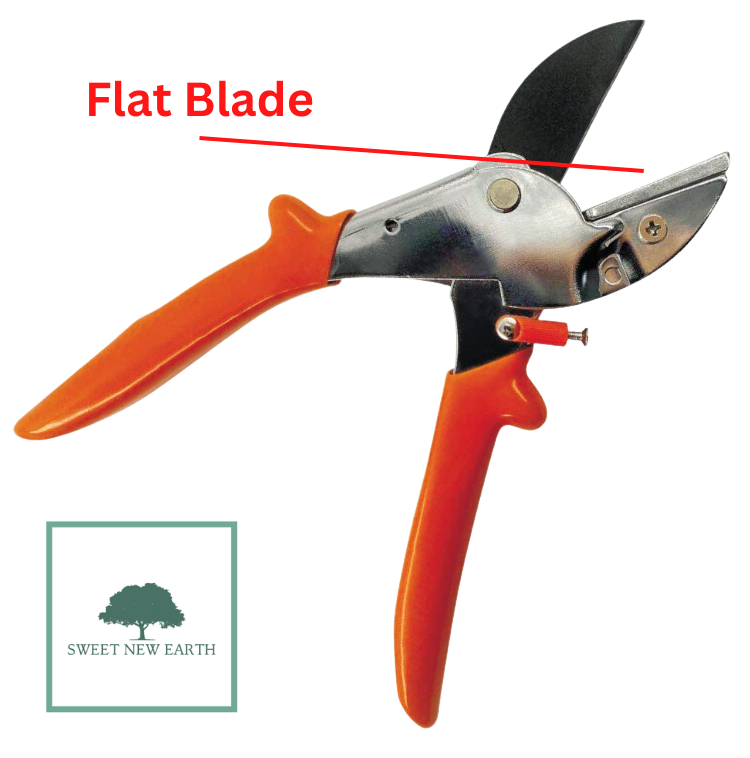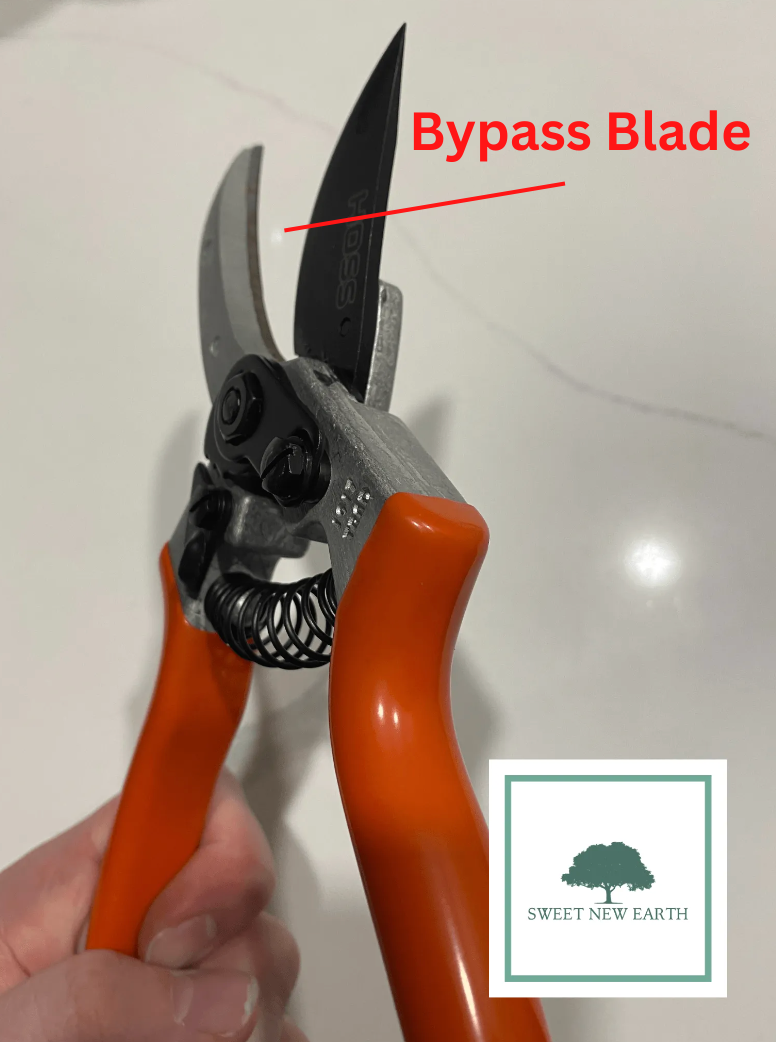Bypass vs Anvil Pruners: Side by Side Comparison

I bet for most of your life, you never even considered that not only are there pruners, but there are different types of pruners. Did you? I sure didn't. Until I needed to know the differences between bypass vs anvil pruners when it came to gardening, I did not give a hoot.
In short, anvil pruners have one sharp blade that cuts against a flat anvil, similar to the way a knife cuts against a cutting board. Bypass pruners have two curved blades that pass by each other like scissors, resulting in a cleaner cut.
Pruners are a must-have in every gardener's toolkit and come in various styles for any job. They are great for
cutting small branches and twigs, whereas loppers are ideal for larger limbs and branches.
Below, we look at both types of pruners and discuss which of the two is the better option for your needs.
Table of Contents
Anvil vs Bypass Pruners: Main Differences
Both anvil and bypass pruners are used for cutting through branches and stems. While they may seem similar, there are significant differences between these two types of pruners. Here are several ways in which both of these pruners differ.
Mechanism of Action
Anvil pruners have a knife-like blade that slices against a flat anvil, cutting the plant material. Bypass pruners use two sharp blades to bypass each other and make a clean cut.
Cutting Ability
Anvil pruners tend to crush and mash the stems as they cut, which can damage delicate plants. Meanwhile, bypass pruners make a clean cut, allowing plants to heal more quickly and preventing the disease from entering the wound.
Nature of Use
Due to their cutting ability, bypass pruners are mainly used on live plant stems. Meanwhile, anvil pruning shears are commonly used for cutting woody stems and dead wood. They're also a common tool for fruit tree pruning since they cut through tougher stems more easily than bypass pruners.
Size and Weight
Bypass pruners are typically easier to maneuver and handle. Anvil pruners have heavier blades and handles, making them more difficult to maneuver but more suitable for larger branches.
Type of Blade
While bypass pruners have a curved blade, anvil pruners have a flat blade. It makes them better suited for cutting thicker or tougher stems, but it can also cause damage to more delicate plants.
Depth of Cut
An anvil pruner cuts up to 3/4 inch in diameter. On the other hand, bypass pruners can cut up to 1.5 inches in diameter. That means they can cut through a larger range of stem sizes than anvil pruners.
Cost
Due to their superior cutting ability, bypass pruners tend to be more expensive than anvil pruners. Larger sizes will cost more than smaller sizes, and special features will also add to the cost.
Anvil Pruners

Anvil pruners are an important tool for gardeners to have in their arsenal. They come in several sizes, allowing gardeners to choose the right size for their needs.
An anvil pruner functions similarly to a knife as it has a flat blade. The blade is generally made of steel and attached to a handle with an ergonomically designed grip.
It is sharp enough to cut through branches and stems of several sizes. It can also crush, split and cut away larger pieces.
Some anvil pruners also come with self-cleaning sap grooves. It helps remove sap and debris from the blades, making them easier to clean. Additionally, anvil pruners are usually made of high-quality materials.
They are also designed to minimize strain on the hands and wrists when cutting, reducing fatigue and discomfort.
When To Use
- Anvil pruners are best suited for cutting dead wood, especially thick, woody stems.
- Anvil pruners are known for their strength. Use them to cut through tough, dry branches easily and stems.
- They are also great for clearing out dense brush.
Avoid using anvil pruners for precision cutting. They have a single-beveled blade and are designed to crush the stem or branch rather than make a clean cut. Anvil blades leave jagged edges and create crushed areas that become difficult tree wounds.
Did you know? Anvil pruners range in price from $20 for a basic pair of bypass pruners to more than $100 for telescopic ones. Telescopic anvil pruners have extendable handles that allow you to reach into larger, harder-to-reach branches and cut them with ease.
Bypass Pruners

Bypass pruners have two blades that are mounted on opposing sides of the cutting head and can cut through branches up to 1.5 inches thick.
The blades rest on either side of the handle and rotate in opposite directions. It allows for a clean cut without any tearing or ripping of the branches.
Due to the double edges and cuts, you don't have to exert as much strength or pressure when using a bypass pruner. The two blades are also designed to prevent any sap or debris from getting stuck in the cutting head, making it easier to clean and maintain.
Some high-end bypass pruners have a pressure-release safety lock that prevents the blades from accidentally closing when you're working in tight spaces.
Additionally, many of these tools come with durable steel handles for a comfortable grip and more control over your pruning. The durable carbon steel blades are also designed to stay sharp for a long time and make precise, clean cuts.
If you want to learn more about a great set of bypass pruners, be sure to check out our complete guide on Hoss Pruning Shears.
When To Use
- Bypass pruners are a daily use tool for everyday pruning tasks. If you have rose bushes in your garden or need to trim back large tree limbs, bypass pruners are the tool of choice.
- They are also great for shaping hedges and shrubs as well as removing dead or diseased branches. In addition, bypass pruners can be used to cut stems and small twigs.
- You can also use them to make precision cuts to graft two branches together. When using bypass pruners, it's important to make sure that their blades are sharp and clean before each use. Doing this will ensure a smooth and precise cut every time.
- Since bypass pruners do not damage the soft plant tissue, you can use them on live plants. For instance, if you need to take flower cuttings or collect fresh herbs from your garden, bypass pruners are a good option.
If you are looking to clear out large amounts of deadwood, avoid using bypass pruners. They are better for smaller jobs that require precision. Anvil would be the way to go otherwise you'll be out pruning for days.
Did you know? Bypass pruners cost anywhere from $15 to $50. Some companies that make bypass pruners include Felco, Corona, and ARS. These pruners are typically used for lighter trimming jobs on shrubs, vines, small fruit trees and flowers.
That's all folks!
You should have both bypass and anvil pruners in your garden tool collection. Bypass pruners are the standard for general pruning and give a cleaner cut, while anvil pruners are useful for dead or thick branches.
When buying pruners, make sure to select the right size for your hand and the job. With proper use and care, these tools can last you a lifetime and will be instrumental in keeping your plants healthy.
FAQs

Carl Anderson
Carl Anderson is an avid outdoorsman with a keen interest in writing about and reviewing tools. He has over 20 years of writing experience and the only time he isn't feverishly typing away at his computer is when he's outside in nature working on his projects. You can learn more about him here.
Join our community!
Join to receive guides, insights, and the latest gardening deals!
